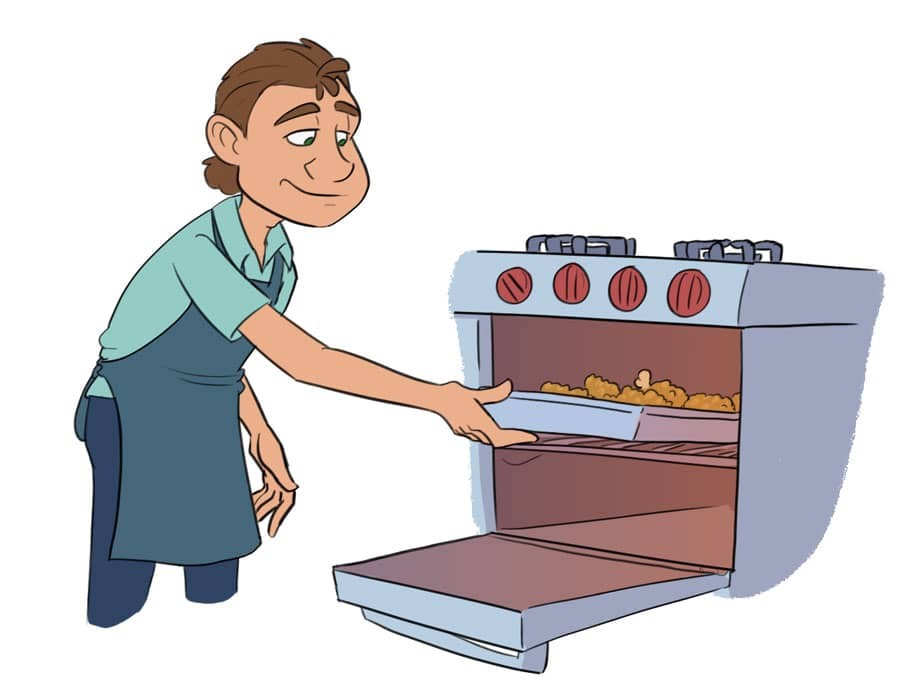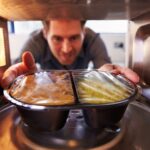Reheating food properly is crucial to prevent bacterial growth and ensure food safety. When food is reheated, it inevitably passes through the temperature danger zone (41°F–135°F or 5°C–57°C), where bacteria multiply most rapidly. Therefore, selecting and using the right equipment to reheat food quickly and effectively is essential. This guide will cover which equipment is suitable for reheating food safely and efficiently.
Understanding the Importance of Reheating Food Correctly
Reheating food thoroughly and quickly is vital to eliminate harmful bacteria that may have developed during storage. Improper reheating can lead to foodborne illnesses. It is imperative to use equipment capable of raising the food temperature through the danger zone within two hours to minimize the risk of bacterial growth.
Identifying Suitable Reheating Equipment
Several types of equipment are effective for reheating food, each with its advantages and best-use scenarios:
-
Ovens: Ovens are excellent for reheating large quantities of food evenly. They are particularly suitable for items like casseroles, roasts, and baked goods. Make sure the oven is preheated to the correct temperature to ensure even heating.
-
Stoves: Stoves are ideal for reheating sauces, soups, and other liquid-based foods. Using a stovetop allows for continuous monitoring and stirring, which helps ensure even heating and prevents scorching.
-
Microwaves: Microwaves are perfect for quickly reheating individual portions of food. However, it is essential to ensure that the food is heated evenly by stirring or rotating it during the reheating process. Microwaves are best suited for reheating small quantities due to uneven heating potential in larger portions.
-
Steamers: Steamers can be used for reheating foods such as vegetables, rice, and seafood. Steamers help to maintain the moisture content of food while bringing it up to a safe temperature.
 Food worker reheats food in the oven, ensuring even heating and safety
Food worker reheats food in the oven, ensuring even heating and safety
Reheating Temperatures and Guidelines
The required internal temperature for reheated food depends on its intended use:
- For Hot-Holding: Food that will be held hot after reheating must reach an internal temperature of 165°F (74°C). This ensures that any potentially harmful bacteria are destroyed, and the food remains safe for consumption.
- Commercially Processed, Ready-to-Eat Food: Ready-to-eat food that has been commercially processed and packaged only needs to be reheated to 135°F (57°C).
- Meat Roasts: Unsliced portions of meat roasts can be reheated to any of the time/temperature combinations allowed for cooking roasts, as specified by food safety guidelines.
- For Immediate Service: Food that will be served immediately can be reheated to any temperature. However, it’s still crucial to ensure that the food is heated adequately to improve its taste and texture.
Training Activities and Best Practices
To ensure food safety, it’s essential to train employees on the proper use of reheating equipment and temperature guidelines:
Point it Out
Challenge: Ask employees to identify the appropriate equipment for reheating different types of food. This exercise can reinforce their understanding of equipment selection.
Explanation: Have employees explain why they chose specific equipment and the benefits it offers for reheating particular foods.
Discussion: Address any misconceptions or incorrect choices by discussing the reasons behind the correct equipment usage.
Check the Temperature
Discuss: Review the required reheating temperatures for different types of food and scenarios.
Demonstrate: Show employees how to properly check the internal temperature of reheated food using a calibrated food thermometer. Emphasize the importance of placing the thermometer in the thickest part of the food to get an accurate reading. You may want to reference resources from stand-up training about taking food temperatures.
Display Resources
Post visual aids, such as the Reheating Food Process Poster and the Cooking and Reheating Roasts Chart, in visible locations to remind employees of the correct procedures and temperature requirements.
Regulatory Compliance and Health Inspections
Health inspectors often observe food workers during food preparation, including reheating leftovers, to ensure compliance with food safety regulations. Inspectors typically check:
- Use of correct reheating equipment
- Temperature verification for hot-holding
- Adequacy of reheating equipment to meet the establishment’s needs
Regular practice inspections and employee quizzes can help prepare your staff for health inspections and ensure consistent adherence to food safety protocols.
Conclusion
Selecting the correct equipment for reheating food is critical for maintaining food safety standards. By understanding the capabilities of different equipment and following proper reheating procedures, food service establishments can prevent foodborne illnesses and ensure customer satisfaction. Regular training, consistent monitoring, and adherence to regulatory guidelines are essential components of a successful food safety program.
